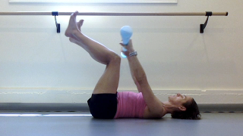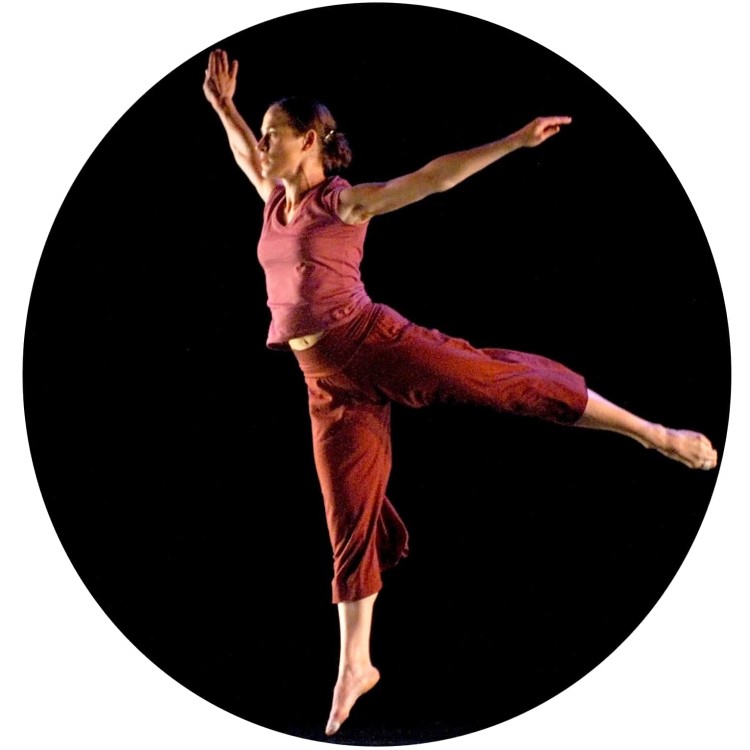A new twist on an old classic: the Pilates series of five
Hey mindful movers! This month is more than a single movement, it’s 5. Amplify a powerful core focused progressive series of exercises without putting stress on your neck. Integrate this sequence as a part of a complete Pilates workout or do alone. If you know Pilates then you know it’s a lot of core in just five minutes! If you don’t, this is a sequence you will definitely want to add to your routine.
Pilates Movement
As movement practitioners and educators, we are inspired by Joseph Pilate’s philosophy of movement, incorporating the mind-body connection to promote healthy body mechanics with strength, balance and flexibility. We also appreciate the broad application for the principles of Pilates from fitness training to physical and occupational therapy for enhancing neuromuscular training and restoring physical function.
Joseph Pilates approached exercise as an integrated whole, rather than working the body as independent parts. He started the paradigm shift for strength and resistance type training with his philosophy that “It is the mind itself which builds the body”.
He encouraged his students to use their mind to focus attention on the core postural muscles that help keep their spine supported and their bodies balanced. It is a method he coined as contrology - “... complete coordination of body, mind, and spirit. Through contrology you first purposefully acquire complete control of your own body and then through proper repetition of exercises you gradually and progressively acquire that natural rhythm and coordination associated with all your subconscious activities." This remains as the foundation for most Pilates practices today.
Pilates Series of Five
The infamous Pilates series of five is a widely practiced sequence of mat exercises. We took the framework of this classic series and integrated the WAV to raise awareness of the body and prompt activation of the senses.
When performing Pilates exercises like the Ab Series of 5 or a simple core stability program in rehab, check-in to notice if lifting one leg or one arm is easier or harder than the other. You may have noticed it, but did you every question why? It may not only be a muscle weakness, but a sensory “weakness” inhibiting coordinated smooth and controlled movement.
Having healthy sensory literacy, is imperative to how we connect with the world on the Pilates mat and in daily life.
How to Perform the Pilates Series of Five with the WAV
This Series of 5 with the WAV invites brain body exploration using both vision and hearing along with tactile feedback. Stimulate core stabilization without over cueing or picking at what movement “should” look and feel like. In these movements, the head remains down with no ab prep or curl allowing more of the core challenge to come from the WAV. You can do this as one continuous series or take a break between moves.
Move 1 - Single Leg Stretch with the WAV
Coordinate breath control and improve pelvic stability as the femurs move into extension and flexion.
Begin lying on your back with your knees bent and feet aligned with your sitz bones.
Hold the WAV with an overhand group and extend your arms to the ceiling. Keep the WAV logo over your chest.
Maintain a neutral spine with the head supported on the ground. Note: You may need a small pillow under your head to comfortably support your neck and throat.
Lift both legs to table top or triple flexion position. Note: Triple flexion means to maintain 90 degree angles at the hip, knee and ankle to promote joint centration.
Slowly extend one leg on a diagonal as you keep the WAV touching the front of the opposite knee.
Return to table top with both knees connecting with the WAV.
Repeat with the other leg maintaining even liquid in the WAV.
What am I doing?
The table top or triple flexion position works spinal stability; coordinates breath control and improves pelvic stability as the femurs move into extension and flexion.
What am I Mindful of?
Does the liquid in the WAV move or tip?
Does the movement in the WAV reflect movement in the pelvis?
Can the knees return directly under the WAV?
Do the movements feel relaxed and calm?
Move 2 - Double Leg Stretch with the WAV
Challenge your neutral spine and posture as you move the arms and legs away from each other.
Move into (or stay) in position as outlined in Move 1 steps 1-4.
Inhale to draw the WAV and knees together over the abdomen.
Exhale and reach the WAV and legs away from center, maintaining connection of your powerhouse.
What am I doing?
Axial elongation challenges the neutral spine and posture as you move the arms and legs away from each other.
What am I Mindful of?
Does the liquid in the WAV move or tip?
Does the movement of the WAV and arms challenge the connection of your ribs more than performing in an ab prep?
How does the WAV help to organize your shoulder range of motion?
Are you able to move easily in your shoulders as you reach?
Promote active hamstring elongation and hip flexibility.
Move 3 - Single Straight Leg Stretch/Scissor with the WAV
Move into (or stay) in position as outlined in Move 1 steps 1-4.
Exhale and reach one leg away from center as the other stays connected to the WAV.
Inhale and return the leg to the WAV.
What am I doing?
Axial elongation promotes active hamstring elongation and hip flexibility.
What am I Mindful of?
Can I maintain equal length throughout the legs as they scissor to and from the WAV?
Does the pelvis move more or less on one side more than another? Is this reflected in the movement of the WAV?
Move 4 - Double Leg Lower with the WAV
Coordinate control of lumbopelvic stability with hip extension and axial elongation.
Move into (or stay) in position as outlined in Move 1 steps 1-4.
Inhale to extend both legs to the ceiling. Keep the WAV reaching to your thighs as they move.
Exhale and reach both legs away from center as you keep your ribs connected to the mat.
Inhale and return the legs to the WAV
Exhale and repeat elongating the legs and trunk as you move.
What am I doing?
Coordinating control of lumbopelvic stability with hip extension and axial elongation.
What am I Mindful of?
Can I maintain equal length throughout the legs as they lift and lower to the WAV?
How does my pelvis stay connected to the mat as the legs lift and lower?
Does the WAV strengthen my awareness of any asymmetries?
Am I side bending to one side as the legs move? Is this reflected in the movement of the WAV?
Move 5 - Criss Cross with the WAV
Elongate and articulate the spine in a rotational pattern to challenge core control and symmetry.
Move into (or stay) in position as outlined in Move 1 steps 1-4.
Exhale and extend one leg across the room as you tip the WAV to the opposite hip.
Inhale quickly and return to center.
Exhale and repeat with the opposite leg, tipping the WAV in the other direction.
Repeat. Listen to the WAV as you move.
What am I doing?
Elongating and articulating the spine in a rotational pattern to challenge core control and core symmetry.
What am I Mindful of?
How does my rib-cage stay on the mat as I move the WAV side to side?
When I look at the WAV, does the flowing liquid move at the same speed on each side?
Do I hear a fast or slow movement of the WAV as I cross from one side to the other?
There is a rich history for Joseph Pilates and “contrology” as well as numerous studies investigating the benefits of Pilates-based rehab. Here are few:
- Introduction to Pilates-based rehabilitation, Orthopaedic Physical Therapy Clinics of North America
- The effects of Pilates-based exercise on dynamic balance in healthy adults, Journal of Bodywork and Movement Therapies
- Transversus abdominis activation and timing improves following core stability training, a randomized trial, International Journal of Sports Physical Therapy
- A kinder, gentler rehab: Pilates provides effective rehabilitation for both body and mind, ADVANCE for Physical Therapists and Physical Therapy Assistants
And because everyone likes a little Hollywood... According to These 12 Celebs, Pilates Is The Way To Work Out!







